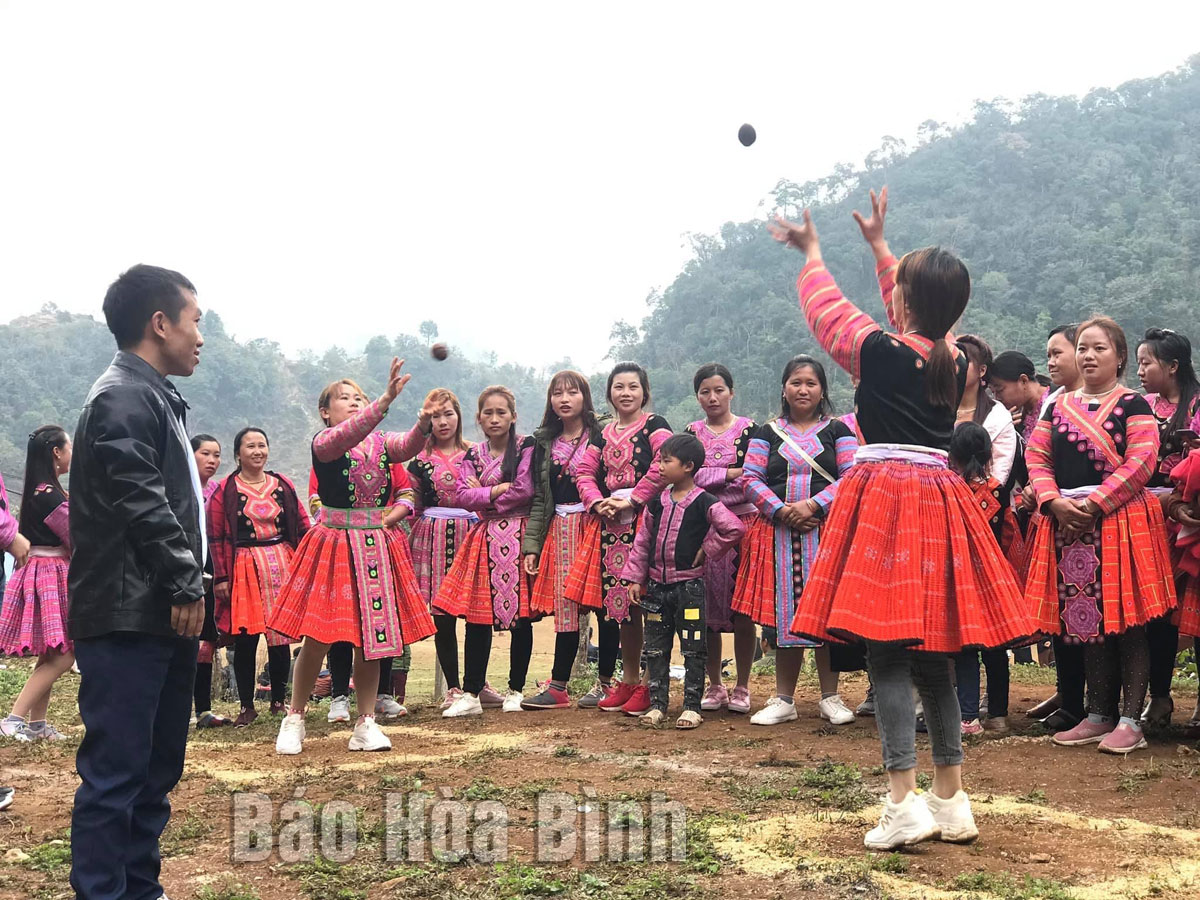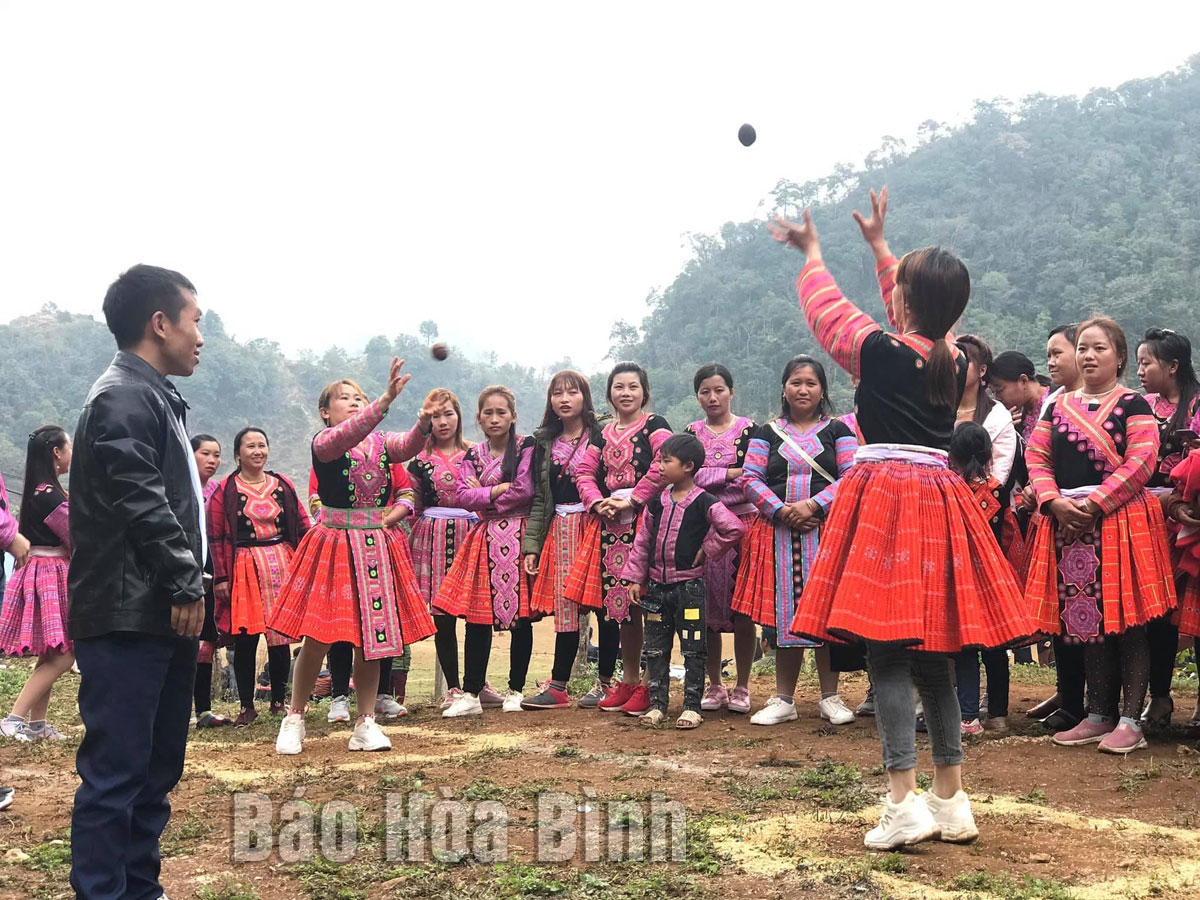
(HBO) – An interesting cultural relic of the Mong ethnic group in the northwestern region of Vietnam is that of the "ném pao” or ball throwing. It is not merely a folk game but represents much more to the ethnic traditions of the Mong. Nem Pao is a unique form of partnership and happiness that can lead to much more for ethnic Mong couples.

Mong ethnic women in Hang Kia commune,
Mai Chau district are throwing the ball (Nem Pao) on a spring day.
Images of Mong women busily sewing the last stiches on clothes and colourful
pao flow into the spotlight as visitors drop by the Hang Kia and Pa Co communes
in Mai Chau district. Colourful pao is made from linen cloth, stuffed with
flaxseed. According to Mong ethnic beliefs, the linen and flax balls are
colorful symbols of happiness and represent fertility and future partnership
within the community.
Pao making has been passed down through generations. Trumpet and khen (pan-pipe)
dances help men to find their partner, and pao are the equivalent symbol of
partnership for women.
A simple game, pao throwing carries great cultural value in that it allows men
and women to introduce and meet each other around the pao symbol of happiness.
The cultural phenomenon results in couples first meeting and transitioning into
becoming husbands and wives.
According to Sung Thi Mua, a local in Hang Kia hamlet, Hang Kia commune, it is
the Mong ethnics’ tradition that women should yield their paos in the spring to
start a season of fertility and partnership.
"We are passing down the making of pao and ball throwing festivities to younger
generations, and in doing so, perpetuate the Mong cultural traditions”, Mua
said.
Sung Y Mai, a brocade weaving artisan in Hang Kia commune, said Mong men want
to marry a woman who is good at weaving, embroidery and sewing pao.
"A good Mong woman must know how to make a good pao”, she said, explaining a
good pao must have tight stitches and it should be the perfect shape.
Nem
Pao is held at the yard of the local cultural houses or at the pitch, during
which two teams, each with three-to-ten men or women, throw the linen ball and
ensure it does not fall to the ground. While playing, women and men exchange
glances, smiles, and affection. After the game, if the woman and man feel the
love, the man will keep her pao and express his admiration on a subsequent
visit to her home. The goal, of course, is a lifelong partnership between them,
based on sewing skill and enjoying the cultural festivities together.
Nowadays,
life in Mong villages has changed drastically. The Mong people are paying due
attention to preserving their cultural values by integrating traditional games
into extra-curricular activities at the local schools.
According to Vang Y Sai, a teacher of Hang Kia Primary and Secondary School, in
a bid to preserve and develop folk games, the school carries out a wide range
of measures to encourage both students and parents to join folk games on regular
afternoons.
Together with ball throwing, other folk games like "đánh yến” (rooster feather
shuttlecocks), tu lu (traditional version of spinning tops), "đẩy gậy” (stick
pushing) and "ném còn” (còn throwing) have been well preserved by the Mong
ethnic in Mai Chau.
The games are not only a vivid illustration of Mong men’s strength and bravery
and the skillfulness of Mong women, but they also raise hope for a happy and
prosperous life./.
The People’s Committee of Lac Son district held a ceremony on April 28 to receive the provincial relic certificate for the ancient rock carving site at Suoi Co stream, located in My Thanh commune.
A special music show titled "The country is in the fullness of joy” has been held at Hoa Binh Square in Hoa Binh city in celebration of the 50th anniversary of the liberation of the South and national reunification (April 30, 1975–2025).
The People's Committee of Lo Son commune, Tan Lac district, has organised the local annual traditional stream fishing festival on April 19 - 20.
As a land deeply intertwined with human history and Vietnam’s millennia-long journey of nation-building and defence, Hoa Binh is often revered for its epic tales and legends.
Residents of Hoa Binh boast a rich cultural identity, reflected in their unique language, traditional attire, customs, and folk melodies – described as "sweet as honey, clear as a mountain stream.”
Lac Son district’s Vu ban town held the 2025 Truong Kha temple festival on April 12–13 (the 15th–16th days of the third lunar month). Since its revival in 2019, the festival has been organised every three years, preserving valuable intangible heritage while meeting the community’s cultural and spiritual needs.



